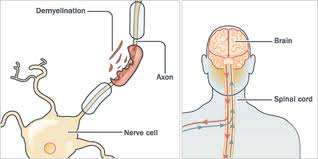Cystic Fibrosis: Cystic Fibrosis: The role of genetic testing in the early detection and treatment of symptoms

In Cyprus, the prevalence of inheriting CF is 1 in 8,000
Cystic Fibrosis (CF) is a life-threatening, progressive, inherited condition that causes severe damage mainly to organs of the respiratory and digestive system. It is estimated that more than 70,000 people worldwide have CF.
CF is caused by mutations on the cystic fibrosis transmembrane conductance regulator gene (CFTR). Although more than 1700 different mutations can cause CF, approximately 120 of them are responsible for most CF cases. These mutations affect the movement of salt and water in and out of cells responsible for producing sweat, mucus, and digestive fluids. Normally, these fluids are thin and slippery, whereas in people with CF, these fluids are thick and sticky — clogging ducts, tubes, and passageways in the body, and affecting the lungs, pancreas, liver, intestines, and digestive system. People with CF experience multiple symptoms that vary depending on the severity of the disease. Some people experience mild to no symptoms until adolescence or adulthood. Symptoms might include salty sweat, frequent chest infections, cough, shortness of breath, malnutrition, and exercise intolerance among others. CF can cause continuous chest and respiratory infections which can lead to respiratory failure. Other CF-related diseases include male infertility, diabetes, liver, and bone disease.
CF is an autosomal recessive disease, so two copies of the genetic mutation are needed – one from each parent – to inherit the disease. In Cyprus, the prevalence of inheriting CF is 1 in 8,000 [1]. Even if the parents do not have CF themselves, they could be carriers of the disease. Being a carrier means that someone has one copy of the genetic mutation. In Caucasians, the prevalence of being a CF carrier is around 1 in 25. When both parents are carriers, there is a 25% chance of the child being born with CF, a 25% chance of the child being unaffected and a 50% chance of the child being a carrier himself. Carrier screening, a genetic test that informs individuals whether they carry a gene for a certain genetic condition, such as CF, can be a key step towards informed family planning. Because of its prevalence, carrier screening is recommended for every couple considering pregnancy by international organizations such as the American College of Obstetricians and Gynecologists and the American College of Medical Genetics.
Most countries with high prevalence of CF include the most common mutations of the CFTR gene in their newborn screening test. Newborn screening tests are part of each country’s public health programs that screen infants shortly after birth for genetic conditions. These programs provide early diagnosis of critical or life-threatening, yet manageable conditions which allows for early treatment and improved prognosis. Alternatively, CF can be diagnosed at any age with a sweat chloride test or a genetic test.
Unfortunately, there is no cure for CF, but there are some treatment options that can ease the symptoms and limit complications. Different types of medications are used as a primary treatment option. Amongst the most used CF treatments are antibiotics to prevent infections, anti-inflammatory medications to lessen swelling in the airways, mucus-thinning drugs, medication to reduce the mucus in the body and oral pancreatic enzymes. Men with CF can use assisted reproductive techniques such as in vitro fertilization, to overcome infertility and have children. There are also techniques that assist in keeping the airways and lungs clean such as, deep breathing exercises or autogenic drainage via airway cleaning devices. A person with CF must also consider their nutrition and seek dietary advice, as it is hard to digest food and absorb necessary nutrients. In some severe cases of malnutrition, a feeding tube may be placed to increase calorie intake. For people experiencing more intense symptoms, treatment options include several surgical interventions such as bowel surgery to treat bowel blockages. Liver, pancreas, and lung transplants can be considered when severe CF-related diseases affect these organs.
Gene therapy, a technique that aims for the repair or reconstruction of the genes with mutations, has been the most promising research for finding a cure for CF [2]. Gene therapy for CF will not be able to fix any organ damage that has already happened, but it could reduce the symptoms, prevent any further damage, and improve the quality of life of an individual with CF. The earlier CF is diagnosed, and gene therapy is implemented, the better the prognosis will be for the affected individual.
The path to treat CF is an evolving map with many challenges. A few decades ago, most children with CF did not survive into adulthood. Advancements in medicine has enabled people with CF to now live into their 40s and beyond. Many institutions and research centers around the world work hard to bring new perspectives to the study of this disease and find a cure. New and ambitious perspectives aim for innovative drug development and treatment options and finally find a cure.
Oreana neonatal screening and Adventia carrier screening, offered by NIPD Genetics, can detect mutations that cause the classic Cystic Fibrosis phenotype along with many other conditions. To learn more, please visit nipd.com. Possible next steps and clinical management should always be discussed with your doctor.
Dr. Marios Ioannides
Head of Research and Development NIPD Genetics
The content is intended only for educational purposes and should not be perceived as medical advice.
References:
[1] https://assets.researchsquare.com/files/rs-413045/v1/a1f57b6e-70f0-4355-aa68-6600743b9517.pdf






